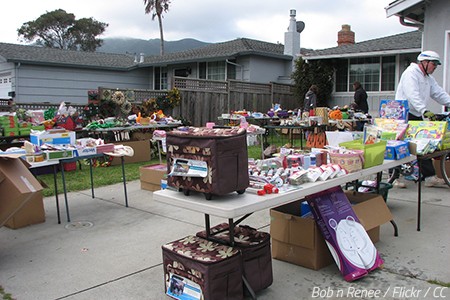
Things should be fine as long as you and your family are safe.
The house moving process is often both stressful and expensive. To make matters worse, moving from one house to another can also be a dangerous endeavor, especially on Moving day when its notorious uncertainty could bring about a few unexpected surprises.
Yes, money and time are important, but you should never forget that your health and the health of your family members, including your lovely pets, is your number one priority.
And that’s exactly why it’s imperative that all of you stay safe when moving to a new home.
Here are the top 20 safety tips for packing and moving that will help you stay perfectly safe and healthy throughout your own house move.
1. Ask for assistance
Don’t try to lift and carry exceedingly heavy household items entirely on your own. Instead, protect your health by asking good friends to give you a hand with the heavy lifting.
As a rule of thumb, the more helping hands you manage to secure on Moving day, the safer it will be for everybody involved in the house move.
How to Get Friends to Help You Move
2. Plan your actions
Plan your actions a few steps ahead to prevent major accidents from taking place on the Big day. Planning is especially critical when you’re moving large and heavy furniture – after all, you wouldn’t want to get stuck in the doorway underneath a huge couch.
On Moving day, plan each and every step before you actually take it.
3. Use good moving boxes
Make sure all the moving boxes you intend to use for your things are strong enough to withhold the weight of whatever will be packed inside them. Inspect thoroughly each and every cardboard container before using it, especially when using second-hand moving boxes.
The cardboard boxes you have should be sturdy, perfectly dry, and without any signs of previous damage. Be extra wary of infestations of any kind.
4. Secure all cardboard boxes
Keep your valuable items safe by ensuring that the cardboard boxes that hold them won’t break under the weight. One of the most neglected moving day safety tips is to double-tape the bottom of each cardboard container before filling it up.
To stay on the safe side, you should do this precautionary measure even when using brand-new packing boxes just because you never know.
5. Don’t skimp on packing supplies

Don’t skimp on packing materials only to save a few dollars – such a tactic almost always turns out to be counterproductive. When you’re packing extra-fragile items, remember to use enough packing paper and bubble wrap to protect well those breakables until they are safely delivered to the new residence.
A good rule to remember is to prepare more wrapping paper and bubble wrap than you think you will need to pack up your delicate possessions. After all, it’s always better to be safe when packing than sorry when unpacking, right?
6. Don’t make boxes too heavy
Provide an accident-free house moving experience by not making cardboard boxes too heavy when filling them up with your things. As a rule of thumb, a moving box should not be heavier than roughly 40 pounds. In reality, cardboard containers heavier than that safety limit pose risks for the persons who are to carry them and for the items that are packed inside them.
Don’t waste any precious time trying to weigh your packed boxes. Instead, lift each one slightly off the ground – if you’re able to do that comfortably without straining yourself too much, then you should be good to go.
7. Use proper moving equipment
Take advantage of the proper moving equipment to guarantee yourself an easy and safe haul of super-heavy items such as large furniture pieces, bulky household appliances, and big moving boxes.
The moving dolly and furniture sliders should become your new best friends when you’ve made up your mind not to hire professional movers to help you out.
Safety Tips When Moving Furniture
8. Protect your back
NEVER bend or arch your back when lifting heavy items on Moving day. In fact, this is one of the most important moving day safety tips you should remember. The thing is that your back muscles are weak and when you strain them too much, bad injuries tend to occur.
Back injuries during house moves – pinched nerves, strains, and herniated disks – are more common than you think so you must avoid them at all costs. And since prevention is the best medicine, ALWAYS lift heavy objects using your strong leg muscles while keeping your back as straight as possible.
9. Use your legs as a hoisting device
Use the power of your legs when lifting heavyweight items, always. Just bend at the knees, keep your back straight (critically important!), and use the strongest muscles in your body (the leg muscles) as a hoisting device. Also, keep a stable base with your feet – they should be shoulder-width apart and one of your feet needs to be slightly forward.
Keep in mind that personal injuries during the action-packed Moving day can happen in the blink of an eye, so you must be extremely careful when handling heavy things.
10. Measure up your furniture

Increase moving day safety by preventing bad accidents before they happen. One way to do it is to ensure that the largest furniture pieces you’re moving will fit through all doors and hallways without any problems whatsoever.
Measure up those furniture items in advance, then measure the doorways and corridors along the intended exit path and do the math. If the numbers spell trouble ahead, get your largest furniture pieces disassembled safely before you move them out of the home.
What to Do When Furniture Won’t Go Through the Door
11. Have a good grip
Ensure you have a good grip on whatever it is that you’re lifting and carrying to prevent personal injuries of any kind or untimely property damage, or both.
First of all, wear high-quality work gloves that will not only give you a better grip on things but will also protect your hands as well. And secondly, use box handles or side openings when carrying heavy boxes. If none are available, use both hands and get your fingers underneath the box bottom for a secure grip.
12. Dress appropriately
Minimize the moving day risks by dressing appropriately for the occasion. The day of your move is the most unpredictable time period when anything can happen, and that is why you should be 100% ready for any bad surprises.
Wear clothes that will give you the best level of comfort and protection. Pick garments made of breathable fabric that are flexible enough to not restrict your movements. Avoid baggy clothes at all costs.
13. Wear good shoes
Pick your most comfortable pair of shoes for the move-out day – the footwear that will give you the best possible protection for your feet and toes. Also, the shoes you wear on Moving day have to have anti-slip rubber soles and, ideally, offer good support for your ankles.
In most cases, you can’t go wrong with a pair of good sports shoes when moving in spring, summer, or fall, and a pair of high-quality boots when moving in winter.
14. Keep all paths clear
Make sure all hallways and pathways along the exit routes are clear of any types of obstacles – no random moving boxes or other disorganized clutter should be in your way when you’re moving large and heavy things out of the home.
Don’t forget that one wrong step or an accidental slip could easily ruin your house move. Randomly scattered stuff along the exit paths spell TROUBLE and pose a real trip hazard.
15. Secure outside areas

Don’t leave anything to chance and take care of the outside areas as well. The path that leads to the moving vehicle should be clean and free of excessive dust, mud, water, snow, or ice. Remove any debris from the ground, no matter how harmless it may look.
Also, trim down overgrown shrubs or protruding tree branches that may hurt someone during the house moving process.
16. Keep your kids safe
Keep young children safe in a room that’s far from the packing and moving action. You definitely don’t want to have kids running around when large furniture items are being taken out of the place. Moving day can be dangerous for adults, let alone for young kids who may not yet fully understand what’s happening.
Ask a relative or a close friend to look after your children in the designated Safe Zone while you’re working on the tasks at hand.
10 Tips for Moving With Children
17. Keep pets from trouble
Guarantee the safety of any pet animals you may own – cats, dogs, birds, fish, and so on. Similar to kids, the last thing you’d need on the day of the move is to have your playful dog or mischievous cat to be running around your feet.
All in all, moving day safety is about taking precautionary measures before an accident could occur. Have your pet in a room away from danger, leave them with some tasty treats and water, and consider locking the door temporarily for fear of somebody letting them out by mistake.
Tips for Moving With Pets Across Country
18. Mind the weather
Stay safe during your move by monitoring closely the weather conditions outside. For example, when moving during a particularly hot summer day, avoid overheating by drinking plenty of liquids, having the home cooled down through the AC on, and wearing light-colored clothes, sunscreen, sunglasses, and a hat.
During a winter move, keep the home heated properly and wear warm clothes in layers when working outside so that you can regulate your body temperature more easily.
19. Use your common sense
Use your common sense to stay safe and healthy throughout the move. Sometimes it’s the little things that can lead to serious problems when you least expect it, so you’ve got to keep your eyes open from start to finish.
Don’t try to be a hero and do things that are more than you can handle. For example, carrying a few boxes at the same time may look cool, but it also is risky for you and the items inside those boxes. So, know your own limits and always think before you act – possibly the best advice to guarantee safety when moving house.
20. Hire licensed movers

Don’t underestimate the dangers when moving from one home to another – trouble can come from anywhere so you just have to remain vigilant at all times.
For your own sake, you must stay protected from dishonest movers – rogue moving companies that have only one purpose – to scam unaware customers. It can be really frustrating, to say the least, to get scammed by bad movers, so stay safe by only working with a properly licensed and adequately insured moving company.
And what’s the easiest way to do it?
Use our Moving Cost Calculator to get free quotes from reputable pre-screened movers that are duly licensed by the U.S. Department of Transportation.
Protect Your Move: How to Avoid Moving Scams
The post 20 Moving Safety Tips: Stay Safe When Moving appeared first on The Moving Blog.







